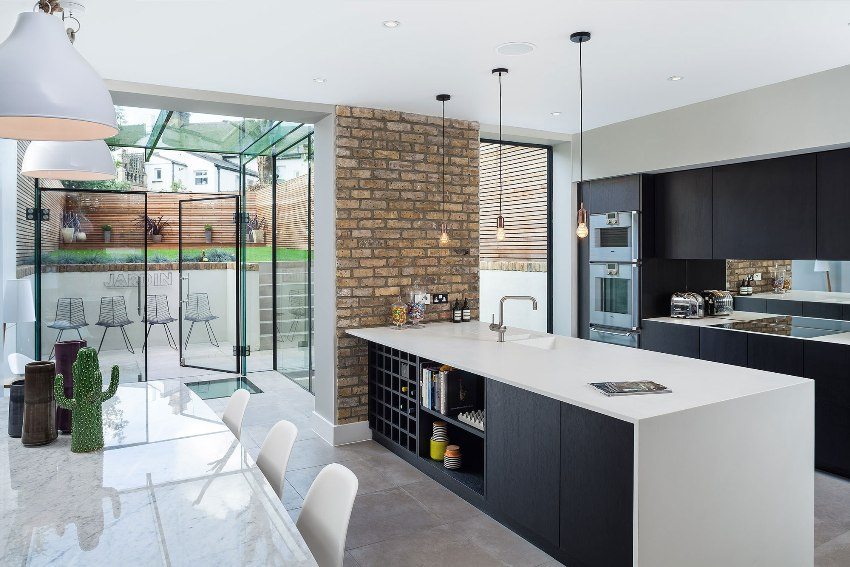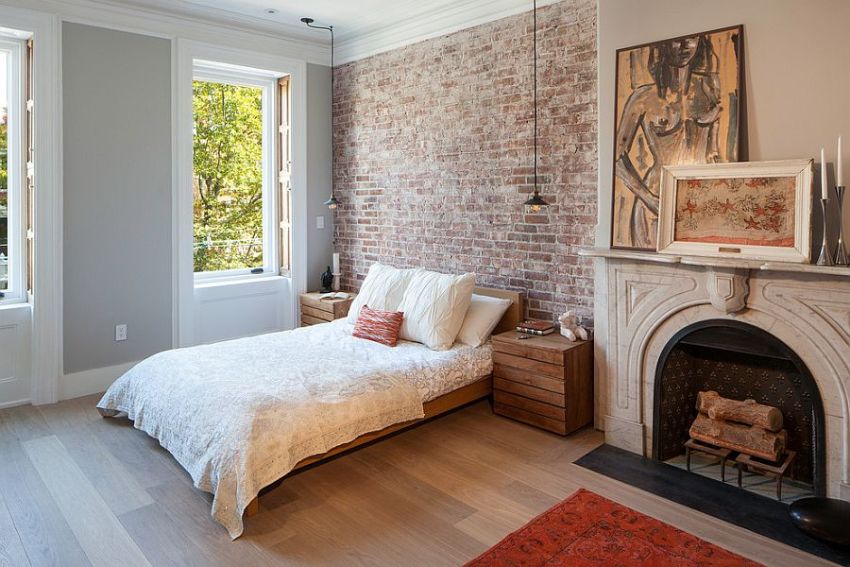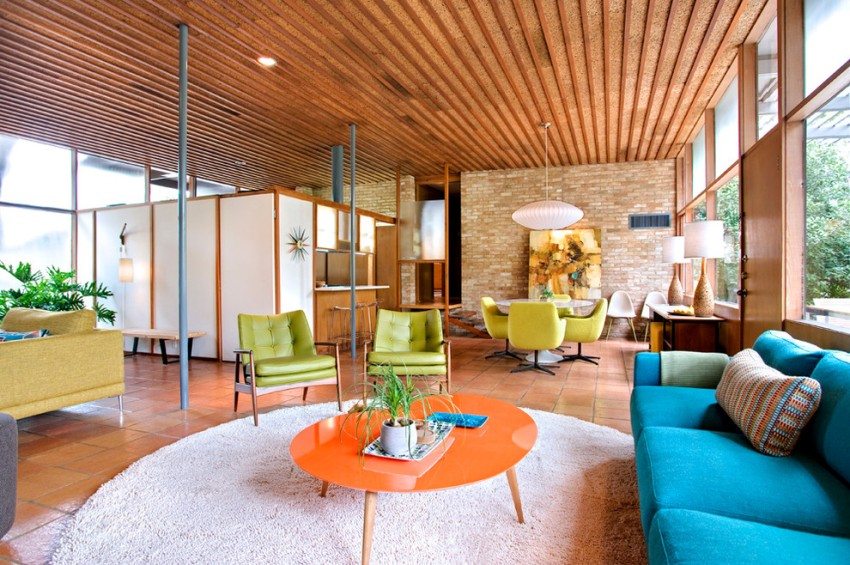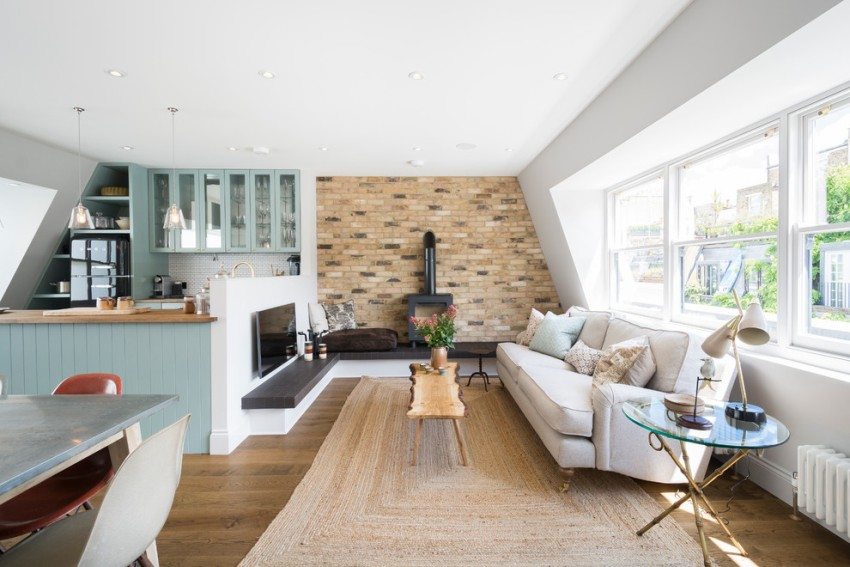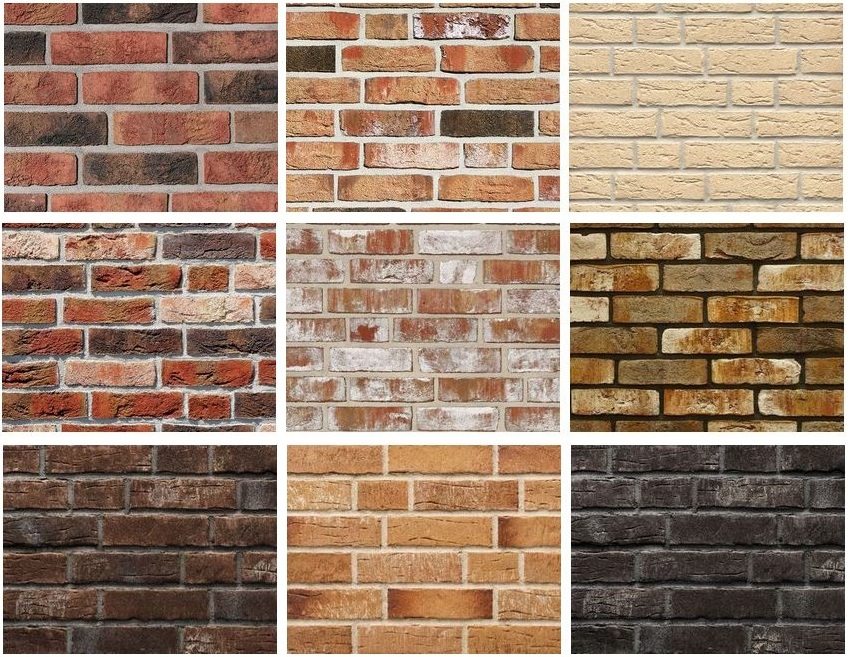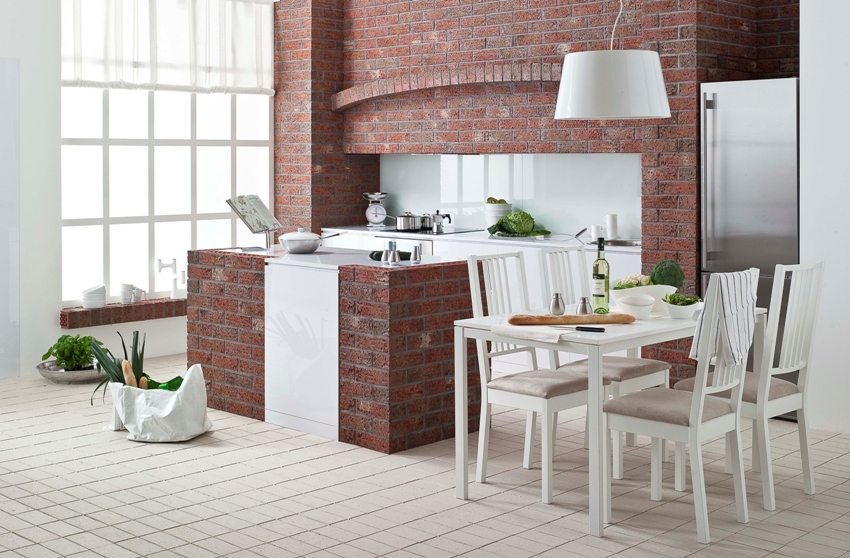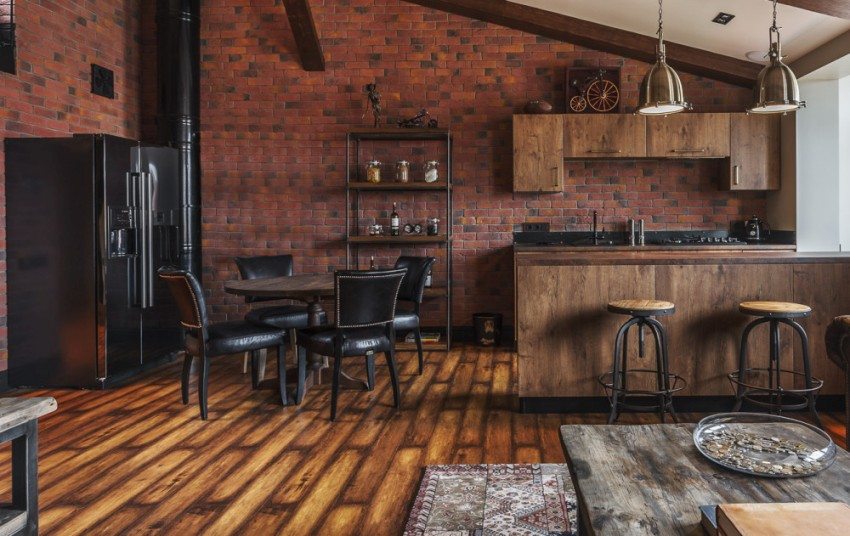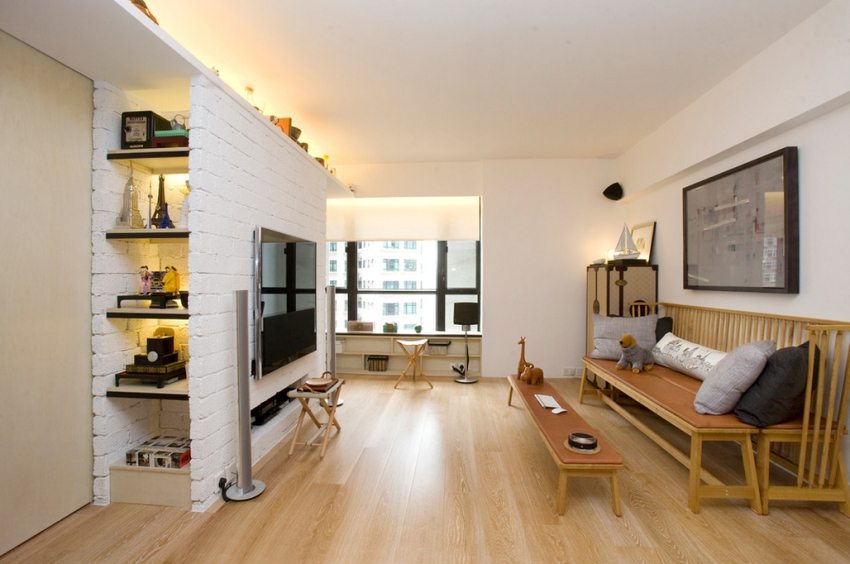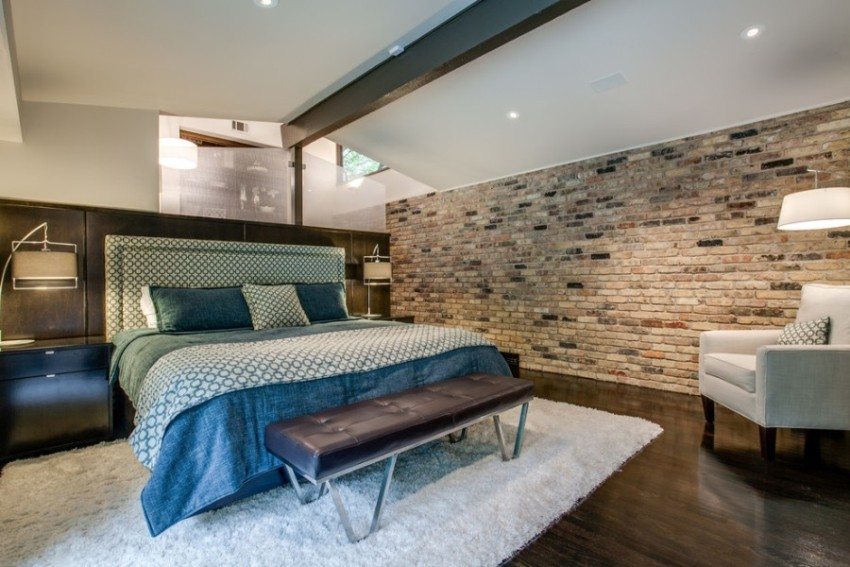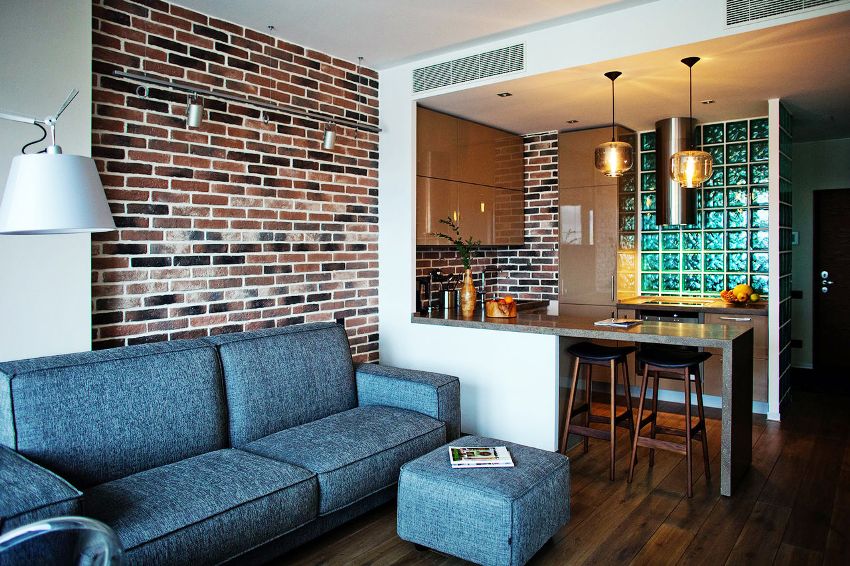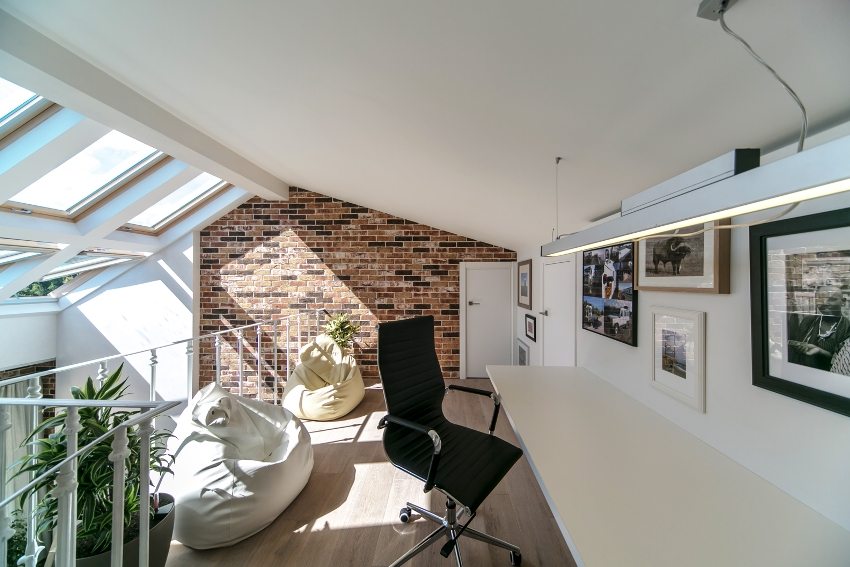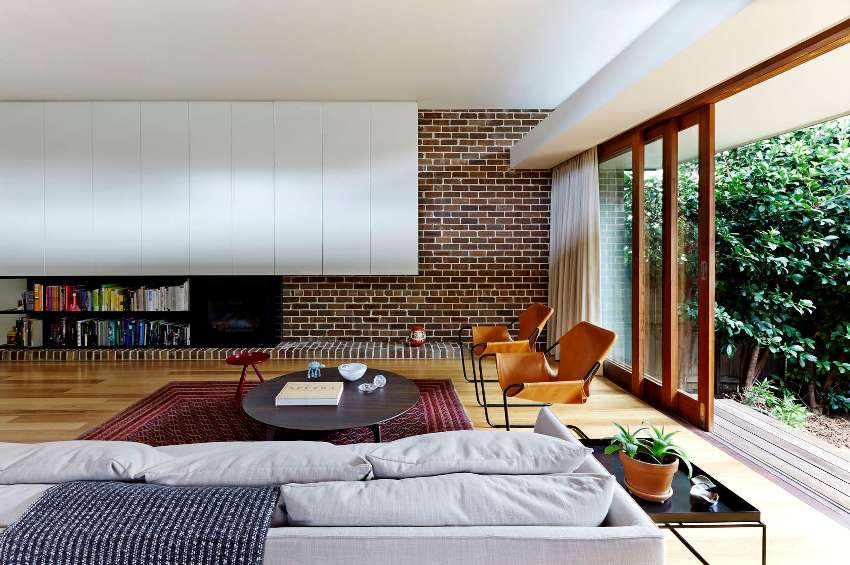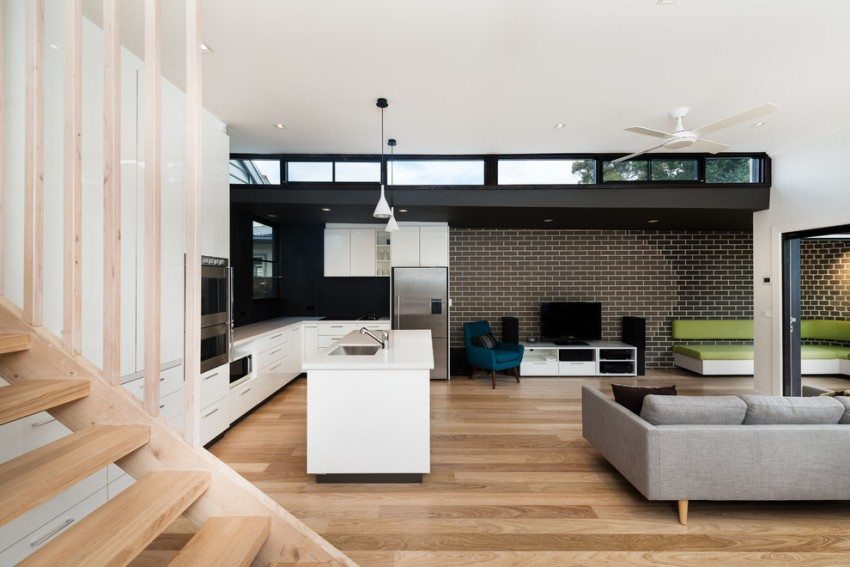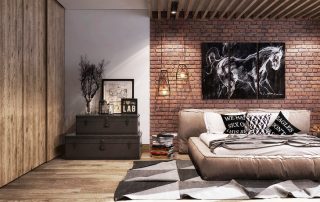Clinker tiles for interior wall decoration are a versatile material that has long been known in construction. Initially, it was created for cladding the facades of buildings or building plinths. However, most often they began to use it for interior finishing work. With the help of clinker tiles, whole rooms, stairs, fireplaces are tiled, as well as other interior elements are decorated.
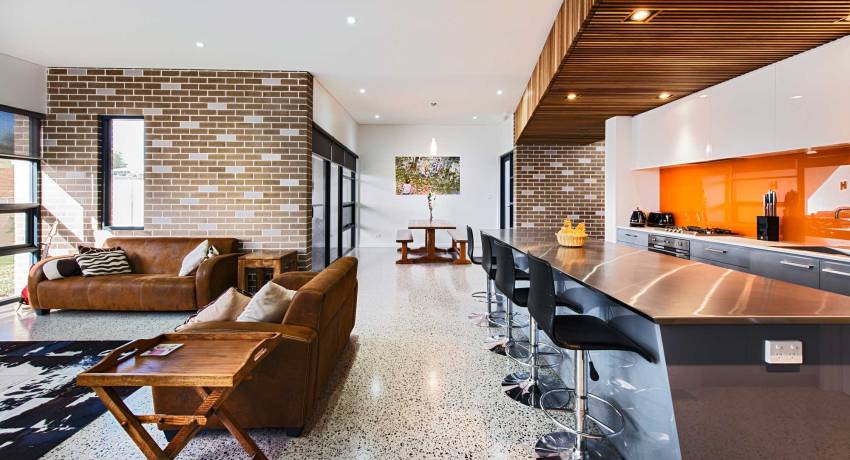
Walls in kitchen-living room faced with modern clinker tiles
Content [Hide]
The main advantages of clinker tiles
This material has many positive characteristics that allow it to be used in almost any conditions:
- resistance to temperature extremes;
- moisture resistance;
- environmental friendliness;
- non-exposure to ultraviolet radiation;
- frost resistance;
- fire resistance;
- ease of care;
- long service life.
That is, clinker tiles can be used to decorate rooms with a humid microclimate (baths and kitchens), balconies and loggias, and other premises with difficult microclimatic conditions. Also, the rather great popularity of such material is due to the possibility of laying it on almost any basis. Tiles can be mounted on concrete, drywall or even metal.
Production technology
All the positive qualities of this material are provided during manufacture. For the production of clinker, an environmentally friendly natural raw material is used - clay. It is mined in special quarries that exist in several countries. The tile manufacturing technique is very similar to the brick manufacturing technique. For this, firing at high temperatures is used.
There are only two production methods. The first involves firing the shaped article after pre-drying. For the second, drying is not necessary. Thus, a finishing material with low thermal conductivity can be obtained. The entire firing process takes about 2 days. The temperature regime of this stage is about 1200 degrees. Thanks to this, clinker bricks are durable.
Clinker tiles for interior wall decoration: types
Clinker tiles are produced for various purposes. There are several varieties depending on the finishing options:
- technical tiles - used for arranging roads and sidewalks;
- waterproof tiles - used for cladding indoor indoor pools, baths and saunas;
- ordinary facing - serves for finishing various parts of buildings;
- special forms for complex architectural plans.
Simple clinker cladding tiles for interior wall decoration presented on the market in a variety of textured solutions and color shades. The color of this material is created by natural dyes, so the tiles are considered safe. It is produced most often in brown-red and white-yellow shades.
Related article:
Do-it-yourself attic finishing options, photo and design. How to properly make self-finishing and insulation of the attic in various ways.
The surface of the tiles is smooth and uneven. The slightly rough top layer resembles a wild stone, and the smooth one is a noble brick. That is why this material is widely used in interior solutions. They can decorate floors, stairs, walls or parts of them, as well as create unique elements of room decor.
How to choose clinker tiles?
When purchasing clinker tiles for interior wall decoration, it is necessary to calculate in advance the area that will be cladding. About 10% of the total area should be added to waste. When accepting packages with clinker tiles, you should carefully examine each one. They should not contain products that are radically different in color, as well as in texture. If the finishing is not planned to be done immediately after purchase, then the tiles must be protected from dust.
Clinker adhesive must be purchased immediately. Usually the adhesive grade is recommended by the tile manufacturer. Information on the rules for the dilution of formulations is usually indicated by the manufacturer. You should not deviate from these figures, then the tile will hold much stronger.
Surface preparation
In order to properly lay clinker tiles for interior wall decoration, some subtleties must be taken into account. Thanks to this, even a novice tiler can easily cope with such a task. The clinker base must be even, strong, and also previously cleaned of the old coating. The wall to be finished should be free from pieces of paint, lime and greasy stains. You should also check the surface with a building level.
Useful advice! All loose pieces of plaster must be carefully removed. If necessary, it is worth laying another layer of plaster or removing irregularities with a putty.
Also, before installing the tiles, you should first prime the walls. This will help stabilize the surface and significantly increase the adhesion of the adhesive to the substrate. Before laying, you should also calculate the location of the tiles, since the height of the room does not always allow you to glue a whole number of products. Cut pieces are best placed under the ceiling.
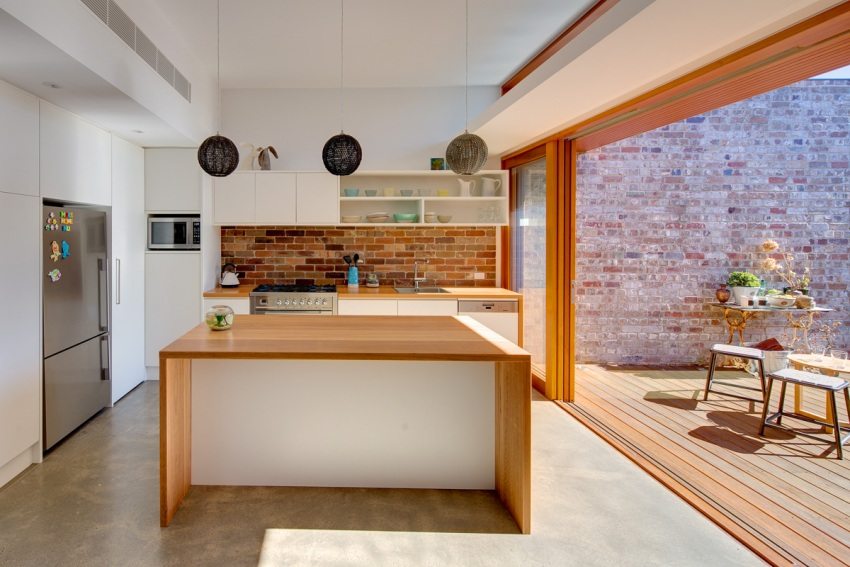
A practical and elegant solution at the same time - kitchen apron decoration clinker tiles
Adhesive preparation
Dry mortars are usually used for gluing clinker tiles for interior wall decoration. The purchased mixture is poured into water and mixed thoroughly. For these purposes, it is better to use a drill, putting on a special attachment - a mixer. The resulting solution is allowed to brew for about a quarter of an hour to completely dissolve all components.
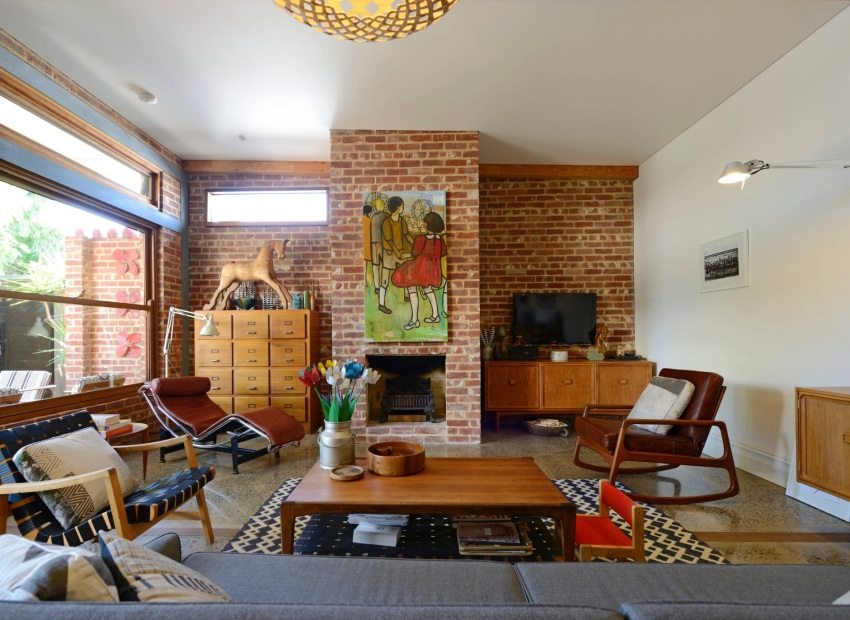
Fire-resistant clinker bricks are indispensable in the decoration of architectural elements such as a fireplace
The area of application of the adhesive composition on the base should not exceed 1x1 m. The adhesive characteristics of such compositions persist no more than 25-30 minutes, during which time it is necessary to have time to paste over the prepared area.
Useful advice! For interior wall decoration with clinker bricks, you should not use glue with reinforced fixation. Suitable elastic, moisture resistant with normal hold.
Installation of clinker tiles
The glue is applied to the substrate using a special notched trowel. The tile is pressed firmly against the surface and tapped well with a rubber hammer until it is level. A small gap must be maintained between adjacent elements. It can be secured with crosses made of plastic.
Useful advice! If the solution does dry out on the surface, it must be carefully removed and a new layer laid.
Grouting of the joints is carried out about a day after finishing. After this time, the clinker is firmly connected to the surface and, when grouting, it is impossible to damage the finish coat. For such work, special trowels and tools are used. A rubber trowel or a rubber strip float will work. The remains of grout from the tile surface are removed with hard abrasive sponges.
Clinker tiles in the interior
Usually, a similar material is used in the interior to imitate real brickwork. This design technique is considered the most versatile. Quite often, clinker is trimmed fireplaces, places around window and doorways. A wide variety of colors allows you to choose the perfect shade that matches the color scheme of the room. Most often, imitation of brickwork is used in styles such as high-tech, minimalism, Provence.
It does not matter whether the wall is completely finished with clinker or any part of it, you can create an inimitable style of the room. Such elements of brick imitation will appeal to guests and all family members.
